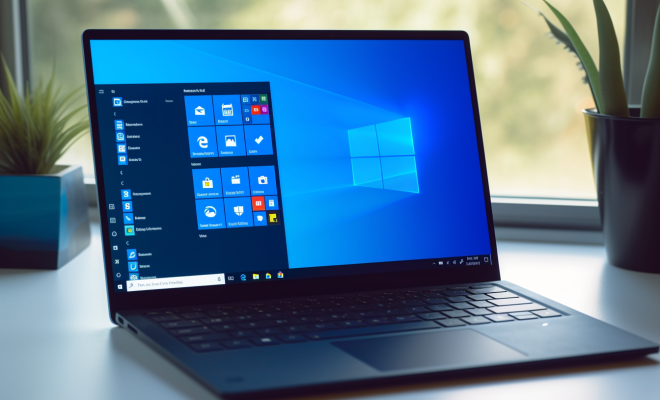53 of the Best Apps for Kids in the Third Grade

At last count, there were over 80,000 educational apps available to teachers. There are apps for everything: literacy, STEM, productivity, audiovisual, etc. There are apps which improve accessibility for students with different learning challenges, i.e. text to voice, voice to text, etc.
While many of these may be a dream come true for educators, the dizzying array of choices is also a nightmare. Teachers just don’t have time to filter through thousands of apps to find the one that works best for the needs of their students. To help, we started to create curated lists of the best apps in a variety of education related categories. In this installment, we will present the best apps for kids in 3rd grade.
Flocabulary is a fun vocabulary program for grades K-12. It’s especially useful in elementary classrooms. The hip-hop style songs help kids learn new vocabulary words, and the app has plenty of games and activities to reinforce what students learn. There are also printable activities and worksheets for teachers.
This app is perfect for elementary school students learning basic US geography. With PopGeo, students practice identifying states, capitals, and more. The visuals help students familiarize themselves with the map, and features like a high score board make PopGeo USA Geography interactive and competitive.
This app supports grammar skills through visual cues, color coding the “who,” “what,” “where” and “why” parts of sentences. Students can enhance their appreciation of reading by discovering the meaning of nouns, verbs, and adjectives in an engaging way, and increase fluency through an understanding of basic sentence structure.
This tool can support students’ inference skills with a variety of questions and examples to keep it fun. The multilevel structure and the Rewards Shop are guaranteed to keep kids engaged. As an added bonus, parents and teachers can easily access detailed reports of students’ progress.
This brilliant app is a pictographic calendar that allows you to schedule your days and all the tasks in between. Parents can organize the daily calendar with tasks, as well as events such as appointments, school, and extracurricular activities.
Free Code Camp has a lot in common with Codecademy. Their lessons are a little tighter too. With lessons that have all of the items already pre-set, all you have to do is read the lesson and work out how to apply it to what they want as the end coding session to each lesson. However, it does not offer the same real-time session, so you will have to create and code on your own outside of the site to reinforce what you have learned after finishing each course.
Is a cool coding app where kids can make games, simulations, or anything else their minds can imagine.
Teaches kids how to code by using simple blocks.
This app uses visual coding blocks instead of text to inspire kids to jump right into coding without getting frightened by long strings of text.
Write About This is an app that addresses all genres of writing throughout elementary school, engaging students and making them feel excited about writing!
Storyrobe allows writers to write, share their work, and receive feedback from others.
Google Docs has all the traditional functionality of Microsoft Word but allows for collaboration between students and for easy-to-give and easy-to-receive feedback from teachers through the commenting and suggesting functions.
Vigorous writing community offers authentic feedback.
Helps students learn the life cycle of plants by allowing them to grow their own plants
Provides teachers with hands-on experiments for their students to conduct.
This interactive website turns students into science detectives.
Gives students an excellent introduction into science.
A large cache of information about climate change.
Said to be “sizzling with excitement” by TeachersWithApps, Operation Math makes kids practice their basic math skills while accomplishing missions. With a 4.4-star rating, Operation Math will engage children aged 7+. According to The New York Times, it’s so fun that even “adults may find Operation Math a great way to brush up their own skills”.
Provides 250 brief, engaging stories. It quickly measures fluency, words per minute, and reading level. The paid version ($3.99) includes reading comprehension questions for each story.
This user-friendly, free app gives easy access to all the Math and Language Arts standards, so you can make sure your kids are meeting them. You can find standards by grade or subject cluster.
This award-winning app inspires a love of the written word by allowing kids to personalize their own journeys from the back of a ladybug. This is the app for you if you’re searching for a creative way to expand young imaginations.
Winner of the Parents’ Choice Award, this app makes it fun for children to master the five key literacy skills: letter identification, letter sounds, rhyming, writing and reading comprehension. The engaging stories and games will help you instill your children with a love of learning.
Students learn basic math by feeding a famished guppy with an insatiable appetite.
A fun and exciting way for students to learn basic math skills.
Teaches students basic math skills using a remediation approach.
Teaches students’ fractions using the card game Solitaires.
For younger students, this app has a sense of Space Invaders to it. There is a “Story Mode” and a “Practice Mode” to choose from. Students learn, practice, and improve skills in multiplication, division, addition, and subtraction.
Designed like a chalkboard, Mathboard focuses on encouraging students to figure out math problems themselves, rather than trying to guess the answer. It comes with numerous modes, such as multiple choice and a mode where students can work out the problems by hand.
Aptly named, MathPentagon is a group of apps that focus on five different math curriculums: ratios, geometry, trigonometry, algebra, and statistics. There are even more extensions that focus solely on the Common Core math standards for each grade.
Created for grades K-6, Motion Math helps students master some of Common Core’s most challenging mathematical standards.
ABC Mouse is a wonderful tool not only for math teachers but all elementary school teachers.
Featured by the New York Times, Jungle Time includes a multi-lingual talking clock and animal faces to help young children learn to tell time.
This app has a mystery story line to it; students are spies who need to defeat the evil Dr. Odd by completing different mathematical missions.
Bugs and Numbers is an award-winning educational app that kids love! It includes several games teaching math skills that are all set in a city made of bugs. All the games feature icky bugs, which kids find quite entertaining.
One of the most important steps in the journey towards critical thinking is the ability to read and interact with books. Reading is more than just memorizing letter combinations. It is about understanding the motive behind characters and the importance of setting. It is about connecting plot developments with real life and making connections between the two. To help students engage more when reading, Whooo’s Reading is a program that works to connect books at a deeper level. As a result of this program, students often increase their love of reading and as a bonus, do better on reading exams.
This app “reinforces early speech and language skills,” and expands the user’s vocabulary through interactive word association games. It earned “Special Needs App of the Day” on SpecialNeeds.com, but is entertaining and educational for all kids. It’s recommended that kids use it alongside an educator or parent.
This tool is a hit with teachers and students because it is a multi-sensory approach to teaching vocabulary. With videos, definitions, games, quizzes, and more, this interactive website is an enjoyable teaching tool. Plus, teachers can create word lists for their students.
Those looking for a fun way to improve vocabulary will love this app! It is simply fun to play and even offers a multi-player mode where you can test your vocabulary skills against someone else. Teachers and parents will love it because of its test preparation tools.
Though it doesn’t focus on any Common Core skills, Story Creator is a fun, creative app for elementary students. Kids create their own storybooks using photos from their device or the included illustrations. They can share their stories easily by emailing them from within the app.
The Read Me Stories app is designed to encourage a love of reading. It is a library of e-books, but it also features a new book every day. Stories include narration and interactive elements.
The award-winning Brush of Truth app is a hit with children 8 to 12 years of age. In this app, readers must make choices that influence the story’s outcome. This interactive choose-your-own-story will excite reluctant readers.
This is an innovative app which enables students with communication difficulties to say what they want, using a sequence of words, sounds and images. It can be configured to feature certain images and play certain sounds, so it can be set up for a particular student to best aid them.
An interesting and straightforward app, it helps students learn languages, including English. The app is supported by its 60 million users. Busuu is interactive and provides personalized instruction.
This guided tour of space is both informative as it is breathtaking. With voice overs, facts and scored music it is a cutting edge VR product.
Discovery TV channel compiled all the content for this app. Students can explore exotic natural locations and interact with our planet in a futuristic way.
OpenWeb is a web browser that converts text into a dyslexic-friendly font, allowing dyslexic students to read with less difficulty. It’s useful for times when text-to-speech is unnecessary or disruptive.
Assistive technology that makes reading easy for students with visual disabilities.
Organic text-to-speech tool that helps students with reading disabilities.
If vocabulary is your personal path to fluency or you’re more interested in a basic understanding of everyday words, Babbel is the app for you. The app uses four different techniques – Sound Recognition, Picture Recognition, Spelling and Fill in the Blank – and focuses heavily on word repetition and sentence completion. Users can also set benchmark goals to track progress and personalize their experience.
Memrise may not be as user-friendly or widely-known as Duolingo or Babbel, but it’s still a great (and free!) language-learning app. Memrise uses an original method for language learning and vocabulary building: Instead of having users blindly memorize words, the app puts words into sentences with similar sounding words from your mother tongue to build natural mental connections. Memrise also uses images that sound like the word overlaid with the unfamiliar word itself (photo of a dove for dov’è) to give visual learners a leg up.
This app was created to aims to bring awareness and change via games. Many of its games have a fee attached, but there are several free games, such as 3rd World Farmer. The game explores issues like war, hunger, poverty, education, etc. An additional free game is Ayiti: The Cost of Life, that requires students to assist a family in Haiti in fighting through a series of trial and tribulations over four years.
Based on the Flat Stanly game, students travel to various parts of the world as a paper figure. This app introduces students to cultures that are vastly different than their own.
Did we miss any? If so, list them in the comments section below.






